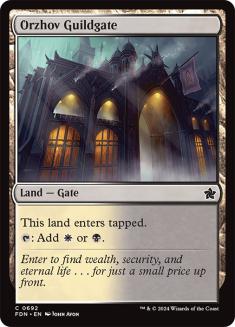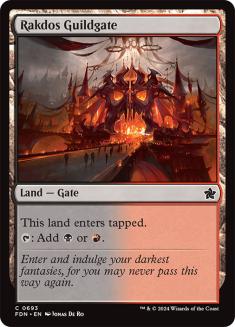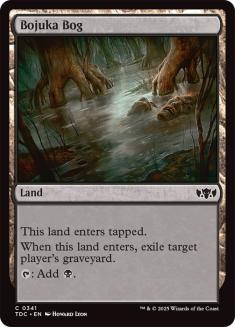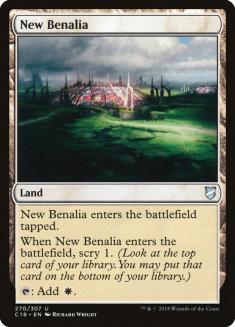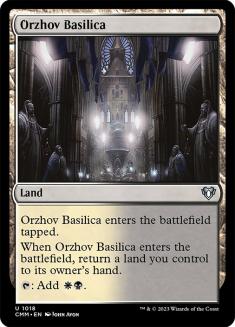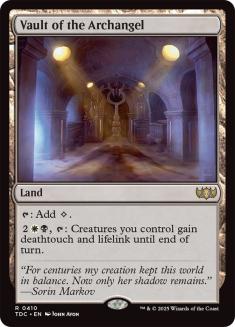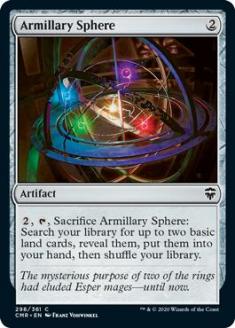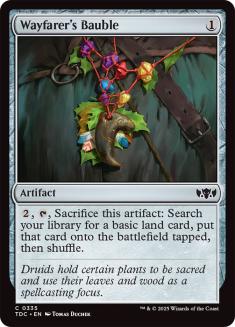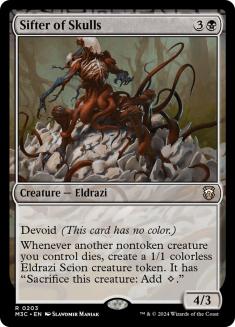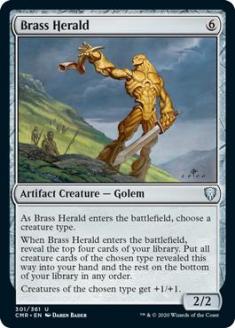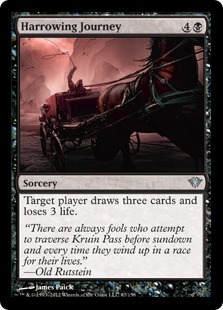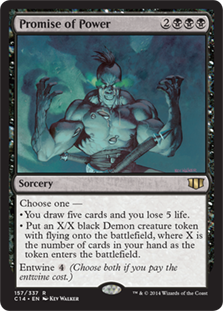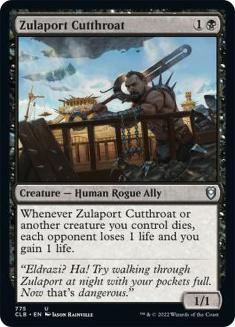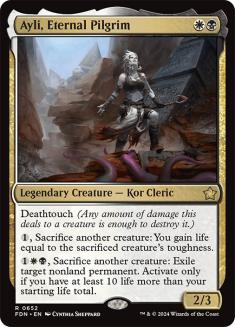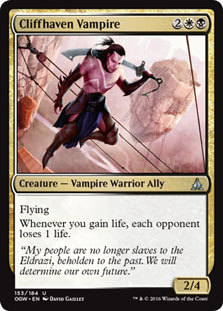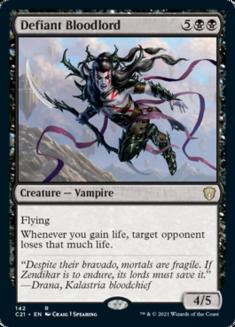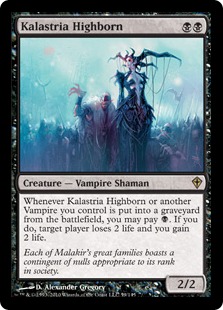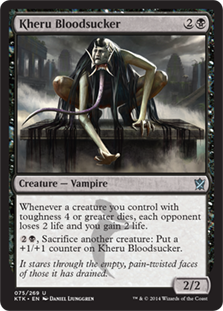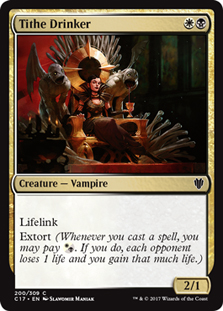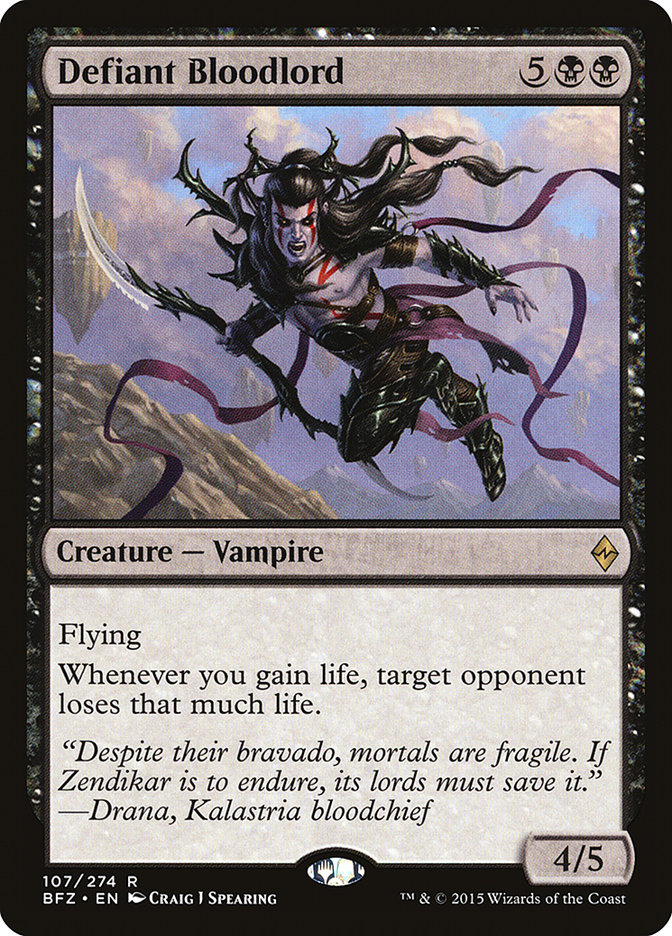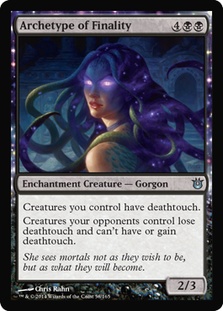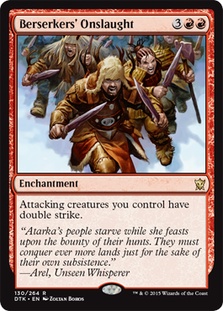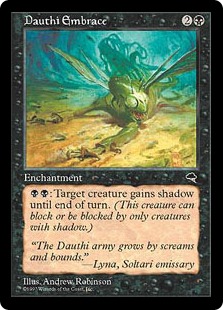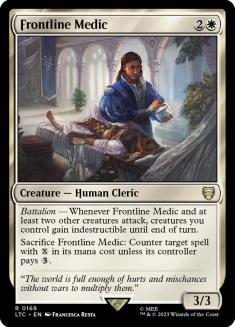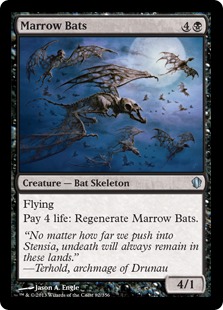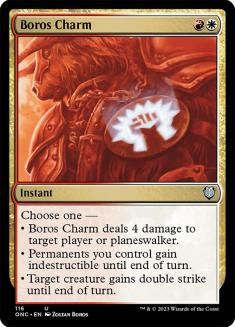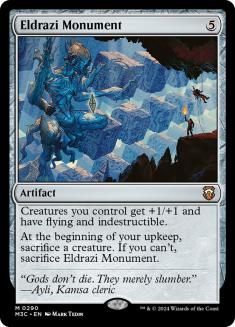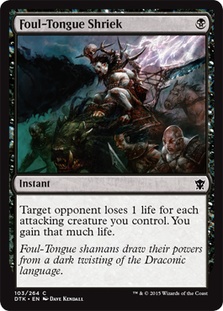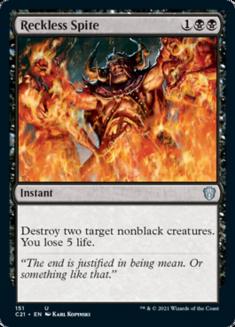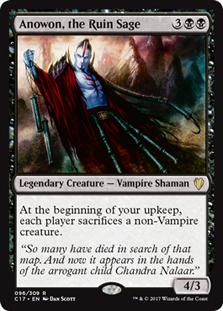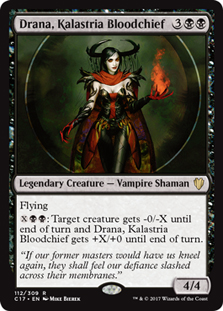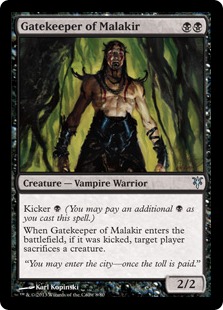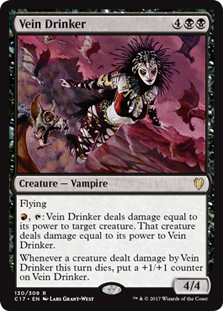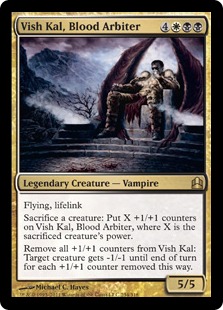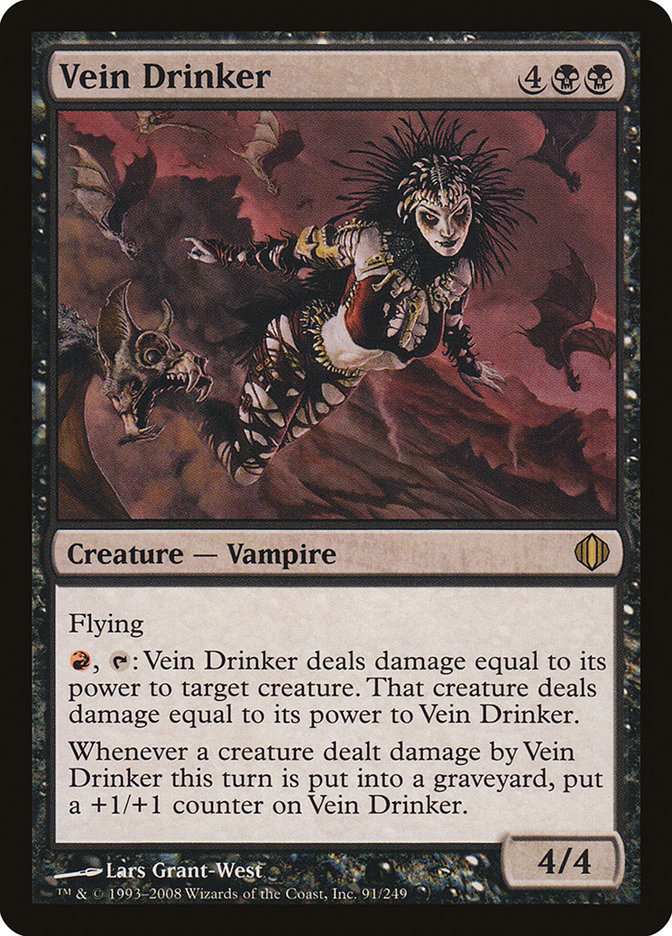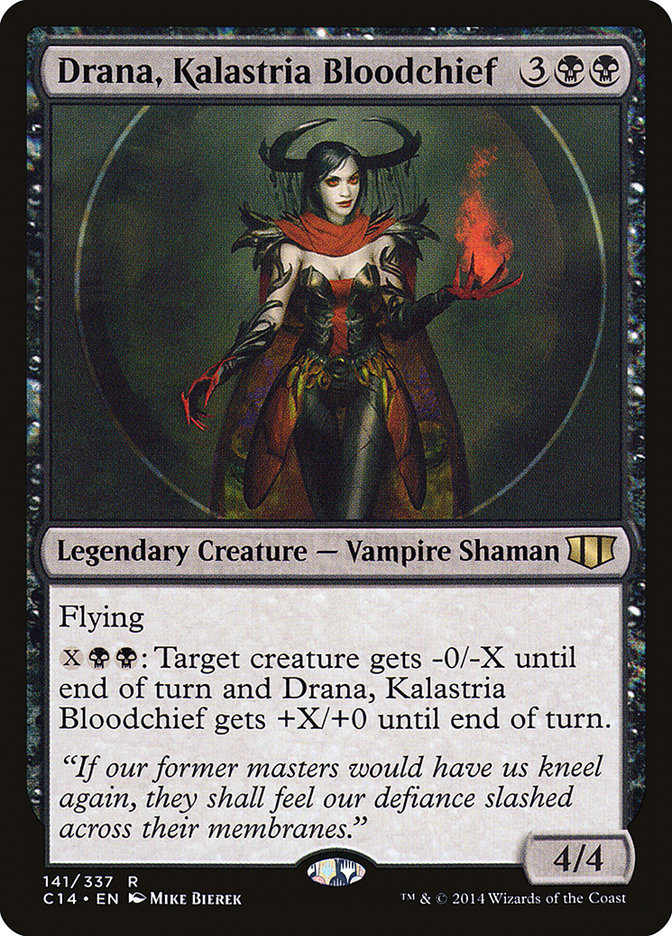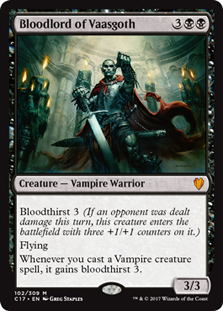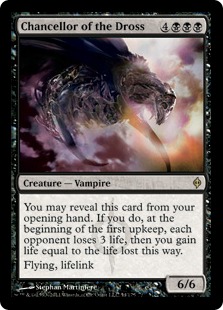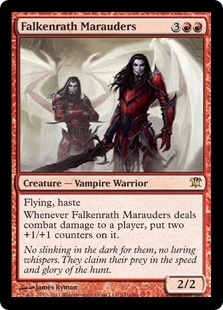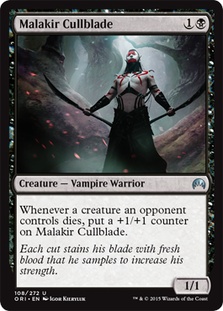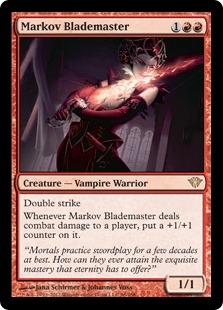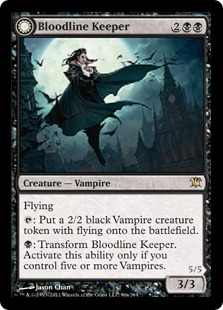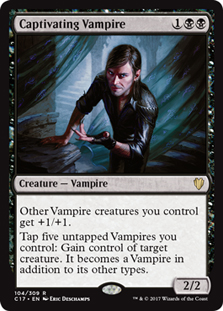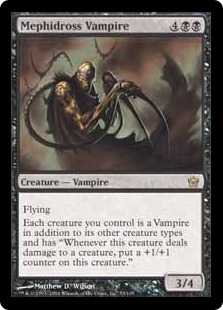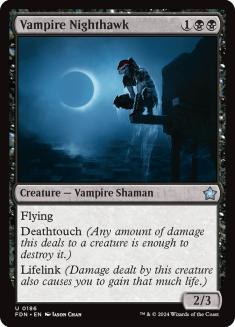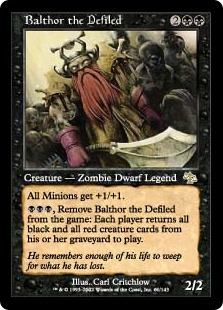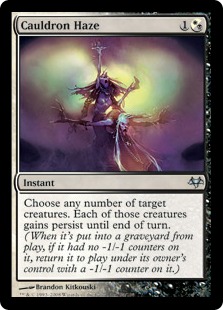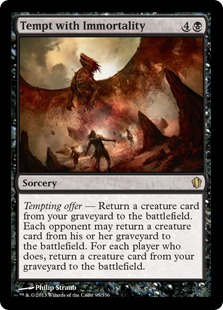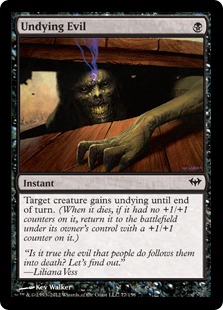Of all the creatures in a modern mythical bestiary, I’ve always found vampires to be the most interesting. There is something deeply seductive about the idea of living through one’s own death, at the minor cost of that which is most important to a person: our humanity.
That drawback always seemed slight to me. There are plenty of predators walking among us, even in a world as mundane as ours. If the policy makers who would rather people go hungry than cut back on military spending can look at themselves in the mirrors at the end of the day, why should a vampire lose that? And a modern vampire would probably have a lower body count than a single drone pilot, a job so full of killing that the soldiers and airmen assigned to it are getting PTSD despite being half a world away from the field of battle.
Given all of that, the Wizards criteria for vampiric affiliation has always seemed to be a bit loose to me. While there’s an entire extended universe of different types of vampires, including the infamous sparkle-vamps of Twilight, Magic’s vampires tend to be pretty straightforward: bloodsuckers, sometimes with the power to make more. Since they’ve been in a similar vein their whole time in Magic, they’ve built up a host of mechanics that feel vampiric; in particular, “growing stronger when they kill,” in the form of +1/+1 counters, has been a popular one, from the iconic Sengir Vampire to the powerhouse Mephidross Vampire.
With that having been said, here’s this week’s letter, from Juan:
Hello Dear Azami!
It took me months to realize this, but Zurgo Helmsmasher is a vampire.
I came to this realization when I reread his last ability: “Whenever a creature dealt damage by Zurgo Helmsmasher this turn dies, put a +1/+1 counter on Zurgo Helmsmasher.”
That is verbatim what is says on one of the oldest vampires in MTG’s history, Sengir Vampire. The 10th Edition art of Sengir Vampire even kind of resembles Zurgo.
With the arrival of this Eureka moment, I decided to make a Mardu Vampire tribal deck. I am on a bit of a budget, so I mostly used cards I had on hand. As a result, a lot of great vampires are missing (I am sorry, Olivia). However, I decided to play around with life gain triggers a bit and +1/+1 counters, and did the best I could with what I had. Here is the result of my brewing:
Creatures (35)
Instants/Sorceries (11)
Artifacts (8)
Enchantments (8)
Lands (37)
12 Swamps
6 Plains
I am concerned about the draw power of the deck as well as being outclassed in combat by bigger creatures. However, I like the very vampiric flavor of draining the opponent while still having a formidable army. Can you help find any tweaks?
Thank you,
Juan
I respect the power level of this deck, especially given the budgetary concerns. Vampires, as tribes go, has a lot of expensive pieces. Cards I considered during this build included the two new legends (Drana, Liberator of Malakir and Kalitas, Traitor of Ghet), Olivia Voldaren herself, Bloodghast, and Nirkana Revenant (which would have been supplemented by Urborg, Tomb of Yawgmoth, itself rather pricey due to that monoblack Eldrazi deck that’s tearing up Modern). I ended up keeping the budget under $60, which drops to a more reasonable $40 when you deduct the $20 store credit Juan (and every other selected submitter) gets for having his deck chosen.
Lands
Out (3):
In (4):
First off, I like what Juan did with his land cycles. Vampires are a base-black tribe, so it would make sense that you’d want your dual lands to be able to produce black as well. Zurgo Helmsmasher is a five-drop with haste and an aggressive personality, which means that dropping him on curve isn’t as big a priority as with some other commanders (like, say, Azami, Lady of Scrolls). Since the color commitment is otherwise fairly light, this allows Juan to functionally run 24 sources of black mana. That having been said, I’d even run the Tarkir common enters-the-battlefield-tapped lands over the Gates in a deck with no specific synergies.
Here, I think it’s fine to skip both cycles. Instead, I like adding in Orzhov Basilica to reset the Temples. Given the power of that interaction, it also makes sense to replace a Plains with a copy of New Benalia, but given that I ended up adding in more white cards than red, it actually works out better to replace a Mountain instead. Vault of the Archangel is both on theme and incredibly powerful, so it makes sense to add it into the mix.
Finally, I think this deck might benefit from 38 lands, instead of the 37 it was previously running. These are not ramp colors, and one of the best ways to compensate for that is to ensure that you’ll be laying lands every turn. As a replacement let’s add in Bojuka Bog, a super-useful utility land with specific synergies with the Karoo lands and Twilight’s Call.
Ramp
Out (2):
In (1):
I don’t think a tribal deck like this one with few artifact interactions is well served by taking a turn off to cast and pop Armillary Sphere. Again, this is the type of effect that I think is rendered less necessary by the addition of a 38th land. I’m not wholly against colorless ramp. I kept the Solemn Simulacrum and Burnished Hart. But those cards earn their spot through dint of being creatures. A lot of cards get more powerful when you add a body to them, and that’s true even in decks that don’t offer the potential for machine-gun kills with Blood Artist.
This section was also a good opportunity to bring in one of the new Eldrazi: Sifter of Skulls. Oath of the Gatewatch contains a couple of Eldrazi which replicate functionality given to colored creatures in our last visit to Zendikar. Sifter of Skulls is a reimagining of Pawn of Ulamog, and I honestly can’t tell which one is more powerful in this deck. They both have their pluses and minuses, and luckily we don’t have to choose… we can just run them both.
Draw
Out (3):
In (3):
Since draw was specifically mentioned as a point of concern, I decided to switch up Juan’s options a bit. Harrowing Journey and Promise of Power are both strong cards, but this is a deck that wants effects to be on creature or to be more than just a one-shot. Similarly, while Brass Herald does an excellent impersonation of a lord, I felt like it was likely to miss, which undermines its effectiveness as a draw spell. These are all vulnerable to discard, given their one-shot nature; a far better draw engine is one that draws you those cards over several turns, allowing you time to play out your options without causing a slow-play bottleneck (as can often happen when a Commander player is faced with too many options at any given point in time).
Basically, Phyrexian Arena (and to a lesser extent Underworld Connections) is the Platonic ideal of a black draw engine. It’s not a perfect card, but it’s usually not worth an opponent’s removal spell… at least not on a one-for-one basis. Sure, Decimate has a good chance of catching it in its reach, but people usually save Disenchant for things like Thopter Assembly.
Then there’s Smothering Abomination, one of my favorite cards printed since the original Zendikar block. This synergizes well with Pawn of Ulamog and Sifter of Skulls, since the Eldrazi Spawn/Eldrazi Scions will trigger the draw, but it’s more powerful than just that interaction. Viscera Seer, Vampire Hexmage, and Burnished Hart are all cards in the deck that synergize well with the Abomination, and it gets even better if you have a Blood Artist in the mix.
Drain
Out (1):
In (6):
If Zulaport Cutthroat were a Vampire, it would not be a cut. As is, I debated between cutting it, Suture Priest, Blood Seeker, and Falkenrath Noble. Each has its positives and negatives: Blood Seeker and Falkenrath Noble are both Vampires, while Suture Priest and Zulaport Cutthroat are not. Zulaport Cutthroat is more in line with the drain theme than Blood Seeker or Suture Priest, and it’s cheaper than Falkenrath Noble, but Blood Seeker/Suture Priest both punish your opponents for overwhelming your position, and Falkenrath Noble can fly and triggers for all deaths, not just your own. Feel free to make a different decision here; it just all balanced out in favor of cutting Zulaport Cutthroat when I was making my determinations.
It’s not like you’re going to be at a loss for these effects after my additions make it into the deck. Ayli, Eternal Pilgrim may not be utterly on theme (like Karlov of the Ghost Council), but the atonality is offset by the power of Ayli as a sacrifice engine. It’s important to be able to machinegun an opponent whose life total is lower than the number of creatures you control; this strategy has won many a game for Commander players. Sacrifice to Ayli, gain life, get a Blood Artist trigger, draw an abominable card… it’s an elegant interaction, and it more than makes up for Ayli’s identity as a Kor who worships the Eldrazi.
I mean, Zurgo wouldn’t come down against the Eldrazi… given the role of Ugin in ruining his timeline, I imagine Zurgo would be quite happy to work against Ugin’s interests. Especially if he was certain he could beat up the Eldrazi once they stopped being useful.
Cliffhaven Vampire is another new addition from Oath of the Gatewatch. It’s like Defiant Bloodlord (another addition), in that it throws a Sanguine Bond effect on a Vampire. This is good for the tribal aspect of the deck, and it’s good for the bloodsucking side. The difference between Defiant Bloodlord and Cliffhaven Vampire is relatively negligible when you’re looking at the trigger for something like Kalastria Highborn, another addition; one makes your opponent lose four life, the other three. In a 40-life format, that doesn’t really matter.
Kheru Bloodsucker might not be as good as I would hope, given the relatively wan bodies of the tribe, but between the vampiric growth and the fact it’s also a sacrifice outlet, it seems like a worthy addition. I’m not exactly sure what type of Vampire the art is trying to be, though. Maybe Tzimisce? Finally, there’s the unassuming Tithe Drinker. It’s an early drop, it has lifelink (allowing it to drain your opponent when they have their shields down), and it also has extort, letting you drain your opponents on every spell. It’s definitely a positive addition to the underlying themes of the deck, even if it’s a tad small when it comes to tangling.
Combat
Out (5):
In (2):
This section is for the cards whose primary purpose seems to be shifting the flow of battle in your favor. Archetype of Finality does this by making your team the deathtouch-iest of deathtouchers, Berserkers’ Onslaught gives your team double strike on attack, Dauthi Embrace lets your team barrel through opposition, Frontline Medic makes your team indestructible, and Marrow Bats… Marrow Bats regenerates for free? I’m not a huge fan of that card, outside of Skeletal Vampire situations. And I’m not a huge fan of Skeletal Vampire either.
The problem with all those cards is that they’re very situational. Many only offer a benefit on attack; Rage Reflection does a better job than Berserkers’ Onslaught at giving your team double strike, for example. In particular, this is a concern for Frontline Medic. A Zurgo Helmsmasher deck really wants to have its indestructible effects extend to other turns, since Zurgo himself is only vulnerable then.
Luckily, we have some good ways to provide that defense and kick butt in combat while doing so. The first, and more obvious one, is Eldrazi Monument. Being able to attack with your team, evading all the ground pounders and surviving all assaults in the skies, while leaving one or two Blood Artist-level combatants behind to be an immovable wall against aggro… it would be a positive effect even if it wasn’t also a sacrifice outlet. It is both, and it is more affordable these days thanks to Commander 2015.
The other card is Boros Charm. I’m a big fan of this card in Commander, especially now that we’re going to see more planeswalkers (thanks, Gatewatch Oaths!). Boros Charm can snipe most of the planeswalkers thanks to its direct damage mode. Sure, occasionally it’s going to finish off an opponent, but that’s much more likely to come from the double strike mode. Especially with a commander like Zurgo Helmsmasher, who can kill in three hits, surprise double strike is way more effective than anticipated double strike. Often a savvy opponent will let a non-lethal commander attack through, especially for a commander like Zurgo who is nigh-impossible to best in combat. If you’re swinging in for a second hit, and they let Zurgo past, Boros Charm is game over.
And the best part? Those two modes aren’t even why I like the card. I like it because it’s a counter-Wrath of God. The third mode is by far the most relevant in Commander, because board sweepers are important in such a card-advantage focused format. If it were just that, perhaps it wouldn’t be worth including, but with the other modes, and the ability to use it to survive a combat you have no business surviving… it’s a good card, and its rising price tag reflects its relevant in both Modern and Commander.
Removal
Out (2):
In (5):
If you’re focusing on a primarily black tribe, chances are you don’t need to go outside the boundaries of said tribe to find sufficient removal. This is particularly true for Vampires. I am totally biased in this, since my first “real” Standard deck was Zen-block Vampires, but Gatekeeper of Malakir is generally a better card to play than something like Foul-Tongue Shriek. Personally, I prefer something like Chainer’s Edict when I am looking for a spell version of that effect, but a creature you can recur with Phyrexian Reclamation or Soul of Innistrad is better than both of those cards.
Similarly, Vein Drinker does a good job of killing multiple creatures while staying on theme and growing in the same way as Zurgo Helmsmasher. Really, the synergy of its two abilities is rather gorgeous to behold, letting it do the psychographic equivalent of flying over the enemies to feast on an opposing creature as it struggles and ultimately fails to fight off its attacker. It’s a fun card, and oft-overlooked. Well, this tribe in particular offers a reason to run it.
Drana, Kalastria Bloodchief is another deceptively powerful Vampire that can act as a removal spell. While Drana is mana intensive, she makes up for it with her ability to kill indestructible creatures, and through the way that her removal ability pumps her power at the same time. It’s a far better rate to pay if in addition to taking out an opposing creature you can thwack your opponent at the same time.
Anowon, the Ruin Sage is the card that most makes me with Zurgo Helmsmasher were an actual Vampire, and not just a practical one. (I guess he has the Fallout “Cannibalism” perk?) Realistically, though, the times that Anowon causes you to sacrifice Zurgo are going to be offset by the times that you just recast Zurgo pre-combat. I mean, the Orc has haste and dying is not his end. Vish Kal, Blood Arbiter can use this form of resilience to pump itself up quite massively, allowing you to sac Zurgo, recast Zurgo, and then swing for nineteen points of damage over two creatures. That would be cool even if you couldn’t use those Vish Kal counters to kill even the most indestructible of targets… and you can.
Vampires
Out (5):
In (4):
While all humans were created equal, the same cannot be said for Vampires, at least not in Magic. Even though these creatures were all on theme, they still seemed like needed cuts. In general, what I did in this section was to cut the Baneslayers, cards like Falkenrath Mauraders or Chancellor of the Dross whose primary purpose is to just win the game, and replace them with cards that offer a more complex series of choices. Bloodline Keeper, for example, is a lord that generates tokens as well. And, unlike Bloodlord of Vaasgoth, Bloodline Keeper works whether or not you cheat him, or your other creatures, into play via cards like Pyrrhic Revival. Captivating Vampire offers a similar benefit over the Bloodlord, only with the added ability to cast a Twilight’s Call in an opponent’s end step and then immediately steal the best resurrected card, thanks to the way that Captivating Vampire is templated to dodge summoning sickness.
Mephidross Vampire is one of the iconic members of the tribe and is mechanically on point with Zurgo Helmsmasher. Not only will it make Zurgo into a Vampire, opening up access to tribal bonuses and triggered abilities, but it also means that Zurgo is going to get an extra counter whenever he’s blocked. It also brings more of your creatures into Kheru Bloodsucker range, which is the type of elegant interaction I enjoy.
Finally, there’s Vampire Nighthawk. It’s a good rattler when you need defense and a good aggressor when you need to make it through the ranks of your enemies. It is a deceptively powerful card and it has found its way into many non-tribal decks of mine; given that it is on theme for this deck, that cuts hard in favor of inclusion.
Resurrection
Out (4):
In (0):
I was not entirely feeling the mass resurrection subtheme. For starters, I tend to prefer Living Death when I am looking for this effect in spell form, although I left in the still-powerful Twilight’s Call due to its flash. I also left in Pyrrhic Revival, because a deck with Mephidross Vampire can probably get those -1/-1 counters off your creatures in a jiffy. But Balthor the Defiled seemed worth cutting. The benefit of putting an effect like this on a creature is that you can recur it, and Balthor’s ability exiles upon activation for obvious reasons. Given that, it’s just an expensive version of the effect, and I worry that any deck built around mass resurrection is going to get far better use out of this than you will.
Although the addition of a bunch of sacrifice outlets will help with that.
Cauldron Haze was worth considering for the same reason as Pyrrhic Revival, but I think this is an effect that is largely duplicated by the more versatile Boros Charm. Sure, this is better when you’re machine-gunning, or if your opponent catches you out with a Mutilate, but it’s a slot better used elsewhere on the whole. If you’re dying for this, Cauldron of Souls is a more repeatable version of the effect, but also probably not worth displacing some action.
Tempt with Immortality is a bad Zombify if things are going against you, and I’m not a huge fan of that cycle in general. I have a soft spot for Tempt with Discovery, since I think it can really turbocharge a game, but on the whole a cunning player can turn those decision trees to their own advantage.
Finally, there’s Undying Evil. While I respect that the card can be a powerful one, this is not the right deck for it. Undying doesn’t go off when the creature is carrying a +1/+1 counter, and that’s the interaction that the deck is built around. Undying Evil has game, but that game needs to be of a different variety than Zurgo offers.
The Deck
Creatures (41)
- 1 Solemn Simulacrum
- 1 Mephidross Vampire
- 1 Baron Sengir
- 1 Vein Drinker
- 1 Blood Seeker
- 1 Gatekeeper of Malakir
- 1 Malakir Bloodwitch
- 1 Vampire Hexmage
- 1 Vampire Nighthawk
- 1 Anowon, the Ruin Sage
- 1 Butcher of Malakir
- 1 Kalastria Highborn
- 1 Drana, Kalastria Bloodchief
- 1 Pawn of Ulamog
- 1 Viscera Seer
- 1 Captivating Vampire
- 1 Sangromancer
- 1 Suture Priest
- 1 Vish Kal, Blood Arbiter
- 1 Rakish Heir
- 1 Falkenrath Noble
- 1 Bloodline Keeper
- 1 Pyreheart Wolf
- 1 Stromkirk Captain
- 1 Dark Impostor
- 1 Necropolis Regent
- 1 Vizkopa Guildmage
- 1 Tithe Drinker
- 1 Burnished Hart
- 1 Soul of Innistrad
- 1 Ankle Shanker
- 1 Kheru Bloodsucker
- 1 Brutal Hordechief
- 1 Defiant Bloodlord
- 1 Smothering Abomination
- 1 Drana's Emissary
- 1 Guul Draz Overseer
- 1 Karlov of the Ghost Council
- 1 Ayli, Eternal Pilgrim
- 1 Sifter of Skulls
- 1 Cliffhaven Vampire
Lands (25)
Spells (33)
- 6 Plains
- 6 Mountain
- 1 Greed
- 1 Well of Lost Dreams
- 1 Phyrexian Arena
- 1 Slate of Ancestry
- 1 Phyrexian Reclamation
- 1 Twilight's Call
- 1 Orzhov Signet
- 1 Rakdos Signet
- 1 Pyrrhic Revival
- 1 Sanguine Bond
- 1 Eldrazi Monument
- 1 Urge to Feed
- 1 Command Tower
- 1 Underworld Connections
- 1 Boros Charm
- 1 Crackling Doom
- 1 Mardu Banner
- 1 Commander's Sphere
- 1 Outpost Siege
- 1 Palace Siege
- 1 Vampiric Rites

The Cost
I really wanted to keep this to more of a budget, but it was particularly difficult here. I had to cut many of the cards I was musing over, cards like Sorin, Lord of Innistrad and Sorin, Solemn Visitor. They’re both good and on theme, but I spent the budget on Phyrexian Arena and Eldrazi Monument instead. Here’s the cost breakdown:
|
Card |
Price |
|
0.15 |
|
|
0.25 |
|
|
0.25 |
|
|
0.25 |
|
|
0.39 |
|
|
0.39 |
|
|
0.49 |
|
|
0.49 |
|
|
0.49 |
|
|
0.49 |
|
|
0.49 |
|
|
0.49 |
|
|
1.05 |
|
|
1.19 |
|
|
1.89 |
|
|
1.99 |
|
|
2.89 |
|
|
3.09 |
|
|
4.49 |
|
|
4.65 |
|
|
4.65 |
|
|
5.49 |
|
|
6.99 |
|
|
7.35 |
|
|
7.99 |
|
|
Total |
58.33 |
Luckily, as I say at least once in every column, Juan will have the $20 store credit to StarCityGames.com to help offset some of these costs. It wasn’t enough to add in Olivia Voldaren, but hopefully it still brings the budget within his means. It was bad enough having to cut Vampire Nocturnus, but running a Vampire deck without cards like Bloodline Keeper, Captivating Vampire, Mephidross Vampire, and Kalastria Highborn means missing out on whole avenues of attack that are thematically relevant, and fun to boot! I hope you’ll agree with me, Juan.
That concludes this week’s Dear Azami. I hope everyone had fun at your local Prerelease, and I wish you the best of luck in the upcoming weekend’s launch events. Cracking an expedition feels pretty great, and I hope you get to have that experience!
Want to submit a deck for consideration to Dear Azami? We’re always accepting deck submissions to consider for use in a future article. Only one deck submission will be chosen per article, but being selected for the next edition of Dear Azami includes not just deck advice but also a $20 coupon to StarCityGames.com!
Email us a deck submission using this link here!
Like what you’ve seen? Feel free to explore more of Dear Azami here, in the Article Archives! And feel free to check Jess’s own Command of Etiquette column on Hipsters of the Coast, for more Commander and casual content. Now on Thursdays!



